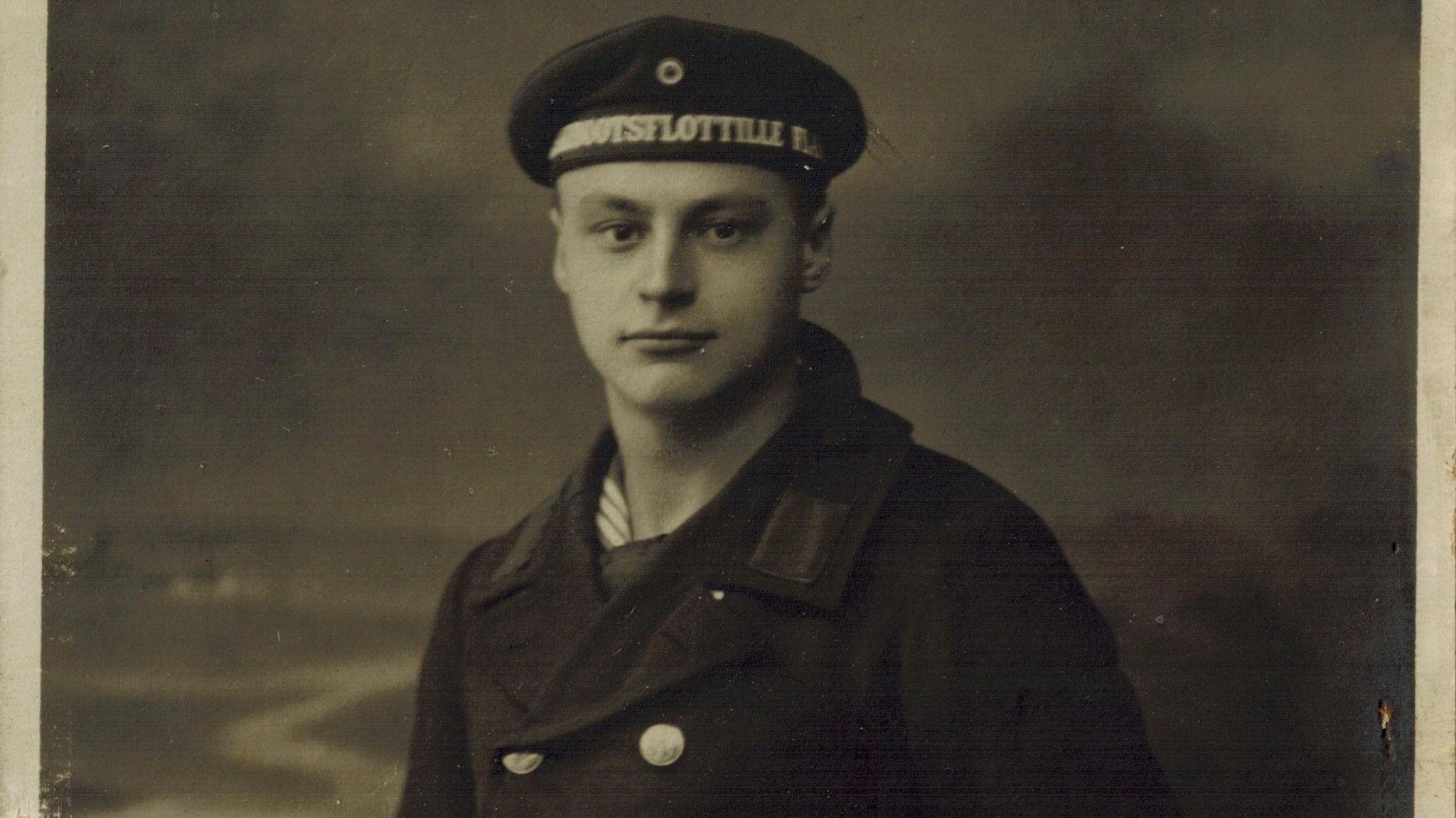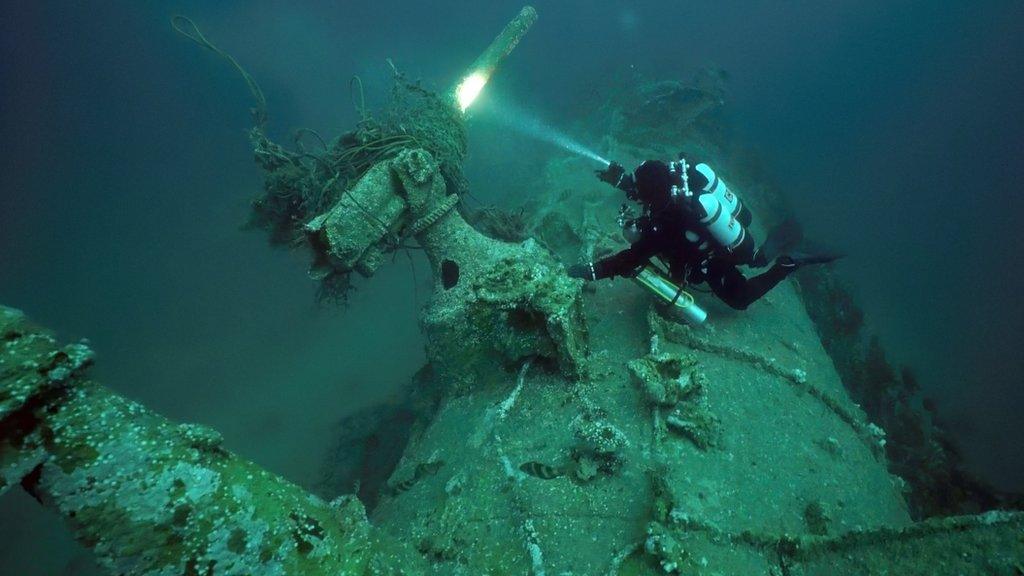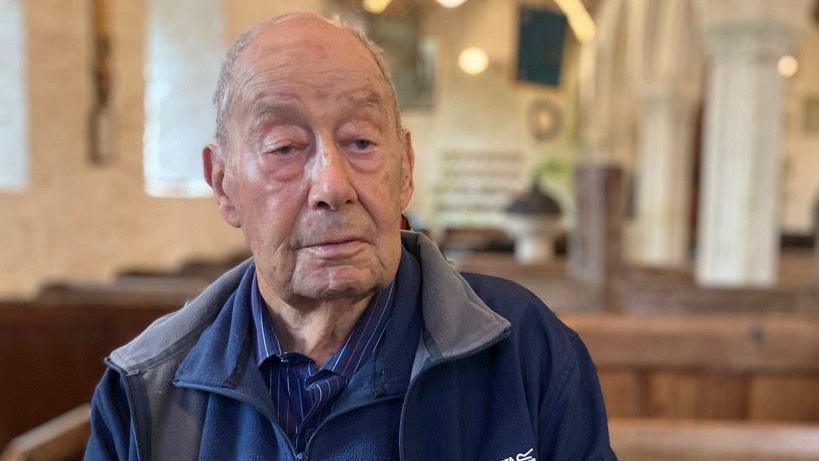Family stories resurface after U-boat documentary

Hans Kuffner, 26, was one of the oldest crew members of the UC-18 U-boat when it was torpedoed during World War One
- Published
A Guernsey-made documentary about a U-boat which sank during World War One has helped resurface the stories of some of its crew to their families.
Christian Lübcke, military historian and regional director of the German War Graves Commission, worked with the filmmakers to track down relatives of the submarine's crew.
Mr Lübcke said there was a mixed reaction from the 10 families he found over the course of half a year, with some relatives "absolutely not interested" while others were unaware they had a relative who had died.
However, he said one family was "very excited" to hear the fate of their beloved great uncle, a seaman on the U-boat, the UC-18, when it was torpedoed near Guernsey.
Seaman Hans Arthur Kuffner, 26, was one of the oldest members of the submarine's crew.
His great grand nephew, Andreas Kuffner, sent Mr Lübcke two photos of his relative who was known in the family as "Hanni".
Mr Lübcke said Hans, who worked as a stoker on the U-boat, was born in 1890 in Hamburg and "his father and brother were both firefighters".
He said: "For many families this question, 'Where is the resting place of my ancestor?' is like an open wound.
"It is very, very important to know where the resting place of their ancestors is - even if it is underwater and they cannot visit it."
He said finding a relative's final resting place on a map could help families "close a book".
Mr Lübcke had been contacted by the makers of the documentary The Hunt For Lady Olive and The German Submarine, who uncovered the wreck of the UC-18 during the course of filming.
He said the wreck, which had been designated a war grave, was "really like a time capsule".
The entire crew of the submarine died when it was torpedoed near Guernsey by the Lady Olive, a heavily armed British warship concealed as a merchant ship to trick submarines - a type of boat known as a Q ship.
The Lady Olive also sank during the encounter, but all of its crew survived as they escaped on lifeboats and were later rescued by the French navy.
'Dark chapter of sea warfare'
Many of UC-18's crew were in their early twenties or teens, and most were single and childless, which made Mr Lübcke's task of tracking them down harder.
And the "very cruel" nature of submarine warfare meant many families had chosen to forget their relative's involvement, he said.
Mr Lübcke said submarine warfare had a "very different taste" in Germany because innocent civilians on merchant and passenger ships were often targeted.
He said: "From a German perspective, I have the impression that Britain, as a seafaring nation, has essentially a greater interest in underwater war graves and deals with them more respectfully.
"Something what worries me is that a large proportion of European society, for various reasons, no longer has a direct link to these war graves.
"Older people have passed and younger people don't have a personal relationship with those who died in the world wars.
"Added to this is that many graves, especially underwater ones, are invisible to the general public.
"That's why it's so important never to forget them."
Karl Taylor, one of the filmmakers, said: "We knew, obviously, that people perished and there were likely to be bodies still inside the submarine.
"But to actually see a face of someone from it and a photo of one of the crew members in their uniform was quite haunting."
On their final dive to the wreck of the UC-18 the filmmakers laid a stainless-steel plaque engraved with the names of all 28 submariners who perished, including Mr Kuffner's.
Guernsey connection
The encounter between the Lady Olive and the U-boat had an unexpected connection to the island they both sank off, according to a census researcher.
Adelaide Lainé, from Guernsey, said one of the crew members of the Lady Olive, gunman William Edward Dumaresq, was the son of a sailor born in St Peter Port, the island's capital.
Mrs Lainé uncovered the connection while doing research into her family tree.
She said said she originally thought William Dumaresq’s father, also called William, was a relative of hers, but it "turned out he just lived in the same house as my ancestor at the same time", according to military and census records.
She said she found out Mr Dumaresq senior had lived in a house in St Peter Port with her great, great, great, great grandmother and her youngest children.
Follow BBC Guernsey on X (formerly Twitter), external and Facebook, external. Send your story ideas to channel.islands@bbc.co.uk, external.
- Published20 March 2024

- Published27 September 2024
